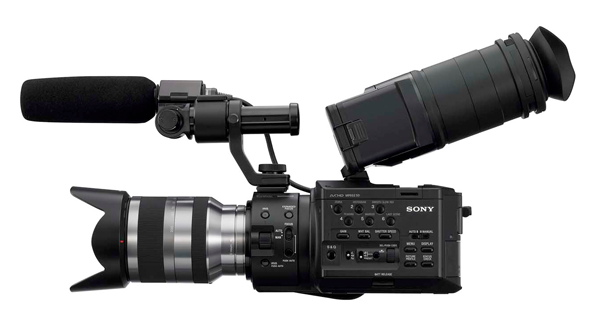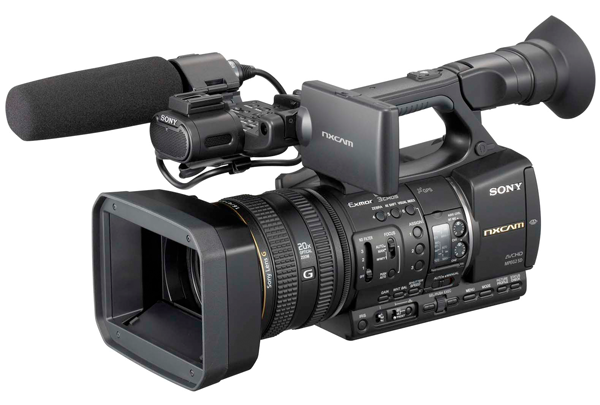The Live Event Producer's Guide to the Sony NEX-FS100
Sony's NEX-FS100 presents challenges shooters never encounter with traditional camcorders, as well as different lens-mounting choices and caveats than DSLR shooters face. In this article we'll discuss the abilities and limitations of the FS100 for live event production work.
Large-sensor video cameras are video camera manufacturers' answer to DSLRs that shoot video. With large sensors designed primarily for video, and not photos, the video image from large-sensor video cameras has less noise at high gain/ISO settings and is subject to fewer artifacts like moiré and aliasing that plague DSLR footage.
I'm not going to go into all the limitations of using DSLR video cameras for event video work as they have been well documented over the last few years, but the purpose of this article is to discuss the abilities and limitations of using the Sony NEX-FS100 video camera for a range of live event production work that requires the camera operator to change focal length while filming, record XLR audio inputs, and record with extended record times.
So before we get into the debate over the pros and cons of zooming with the lens or moving the camera, let's accept that the former is the only option for some event video work, like videorecording a stage performance, a conference speaker, figure skating, or a panel discussion.
Currently, there aren't many large sensor video camera options in the $4,500-6,000 range for video producers who want to replace their entry-level professional HD camcorders like the Sony Z7U and EX1, Canon XHA1, and Panasonic HMC150. Panasonic was first in the category with the AF100, but critics claim that the sensor is really a repurposed photo sensor and the 2x magnification factor cuts into your wide-angle options significantly. For these reasons, the FS100 is a very popular video camera and arguably the one by which all future large-sensor video cameras in this price range will be judged.

The Sony NEX-FS100
Zoom Lens Options
A large-sensor video camera article wouldn't be complete without a discussion of zoom lens options. But they are one of the most complicated components of the FS100. Prime lenses are not as complicated because they don't change focal length (zoom), so I'm not going to spend much time on them here.
Videographers are accustomed to having 10-20x zoom lenses. The wide ends are all fairly similar at around 30mm but extend somewhere in the range of 300-600mm on the telephoto end (ranges adjusted to 35mm equivalent). Some of the lenses are fixed aperture, meaning the iris can hold its aperture throughout the zoom range but the longer lenses tend to stop down more. By illustration, the Sony NX5U has a 29.5mm-590mm 20x zoom lens that has a maximum aperture that moves from f1/.6 to f/3.4 as you move from wide to telephoto. Ideally, camera operators don't want to lose light when they zoom in, so finding lenses that are fixed aperture or have a small range is preferable.

Sony's HVR-NX5U has a 20x zoom lens
Unfortunately, SLR lenses that have a fixed aperture are limited to mainly 3x lenses. The Canon 24-105mm f/4.0 is a notable exception as it is both fixed aperture and a 4x lens although this is nowhere near the 10-20x that videographers are used to on their camcorders. So in order to cover the same range, multiple lenses are required. And often it's not enough to merely cover the range and you might find yourself getting lenses that overlap the ranges of others in your collection so that, once you frame your subject, you still have a bit of range left to go wider and tighter if needed.
Related Articles
Almost Live with Streaming Media reports from NAB 2014 with the latest on the Sony NEX-FS700R and new developments in the E-Mount lens ecosystem.
An in-depth interview on Sony's new 4K-capable large-sensor camcorder that generated tremendous buzz at NAB 2012 in Las Vegas this week.
New NXCAM designed for high-speed shooting and is capable of capturing footage at up to 960 fps; also features a range of capabilities such as 3G HD-SDI output and built-in ND filters; supports most DSLR 35mm lenses via E-Mount and adapters